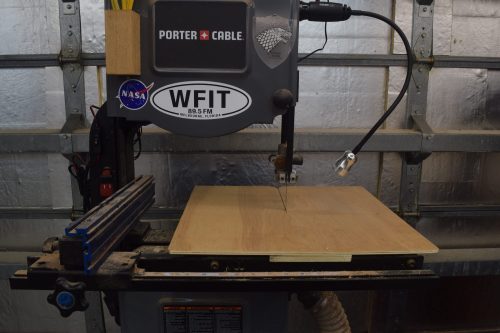My drill press lighting scheme worked out really well and I have other tools that could use a helping light. Enter a few useful items. 1. Is a pair of car accent headlight strips (7 bucks for the pair and super bright) 2. Inline switch 3. 12v power supply. All told, about 20 bucks of stuff. 
I started by zip tying the power brick to the back side of the bandsaw housing. Make sure all the cables and zip ties are in places that won’t get snagged by wood passing through the bandsaw.
I used some 3M VHB tape to stick the switch to the front of the machine within easy reach of the tool’s power switch. VHB tape is a bit pricy, but really good stuff if you need something to stick and stay stuck.
 The light strips fit nicely under the top section of the cast band saw structure. The strips came with some basic double stick foam tape. For now they are sticking ok, but the cast housing is rather rough, so I expect they will need additional shoring up after a bit of Florida summer gets to them.
The light strips fit nicely under the top section of the cast band saw structure. The strips came with some basic double stick foam tape. For now they are sticking ok, but the cast housing is rather rough, so I expect they will need additional shoring up after a bit of Florida summer gets to them.
All the lighting wiring comes to this point behind the switch. I tied the two lights together and connectorized them to the switch. I used a lot of zip ties to keep all the wires out of the wood aperture, and I think it was pretty successful.
I had a goose necklight already installed from a while back. It does an ok job, but with the new lighting strips everything is really nice and bright when working on the bandsaw.
Lighting Test




































